#history of brittany
Text

Château de Costaérès, Trégastel, Brittany, France
Loic lagarde Photography
#art#design#architecture#history#luxury lifestyle#style#luxury house#luxury home#medieval#chateau#castle#chateau de costaérès#brittany#france#trégastel#island#private island#loic lagarde#neo-medieval
761 notes
·
View notes
Text

The Birth of Vizsla
#this one is kinda silly but I love it#my art#art history#vizsla#brittany#weimaraner#gsp#the birth of venus
84 notes
·
View notes
Text
Paris2024 Women's 200m Results 🏃🏾♀️💨
Gabby Thomas
21.83 🥇🇺🇸

Julien Alfred
22.08 🥈🇱🇨

**Julien brings home St. Lucia's 2nd Olympic Medal**
Brittany Brown
22.20 🥉🇺🇸

💙Congrats Ladies 💙
#woc#black women#black history#black woman magic#team usa#team st. lucia#st. lucia#usa#track and field#olympics track and field#womens track and field#womens 200m#olympics#olympics paris#olympics 2024#olympics paris 2024#olympics 2024 paris#paris france#paris#paris 2024#paris olympics#paris 2024 olympics#paris olympics 2024#2024 olympics#2024 paris#2024 paris olympics#2024 olympics paris#julien alfred#gabby thomas#brittany brown
74 notes
·
View notes
Text
Xenophobia in Celtic nations' independence movements: A guide to the red flags
This is something I've wanted to write about for a long time - I want to go over this in more detail when I can. But for now a short guide to the most egregious red flags is warranted imo.
'Celtic nations' refers to the modern regions where Celtic languages are still spoken, namely Ireland, Wales, Scotland, Isle of Man, Cornwall and Brittany. Its important to know that these places are called Celtic not because of who lives there, but because of the languages which have survived there. Its a common error to think 'Celtic nations'= Celtic people. In my field (Celtic Studies) Celtic is generally only applied as a descriptor in the sense of language family.
Because of the popular misinformation 'Celtic nation' = 'Celtic' population, xenophobia rears its ugly head in multiple corners of the various Celtic nations' independence movements. Left unchecked, this xenophobia develops into outright racism. Which is why it's important to recognise these red flags when you see them.
'Acceptable Targets':
The reason why some of the xenophobia goes unchecked (and develops into worse kinds) is because a lot of xenophobia in the Celtic nations is aimed at 'acceptable' targets - which no-one bats an eye about when this rhetoric is deployed. But were it deployed against any other nationalities, it would immediately obvious that it isn't acceptable. Now, I will preface this with that there's nuance with these nationalities and there's something to be said about whether some of it is 'punching up'. However, because of how accepted it is to be casually xenophobic against these privileged groups, it is signalled through that that it's okay to be xenophobic in general to less privileged groups. I feel its important to address the first rung on the ladder before tackling any higher up.
Without beating around the bush, I'm talking about the English (and French. But I know more about the English so that's where my focus will be).
Yes, pro-independence anti-English memes and jokes can be funny. Most of them do stay on the side of punching up and many raise important points on the effects of English imperialism on the Celtic languages. However, there's a fine line between punching up and voluntarily using and wielding xenophobic arguments and rhetoric to get one up on the English. This, in my view, only paves the way for worse kinds of xenophobia and to me is a canary in the coal mine situation. But I also cannot talk about this without also making it clear that it is possible to recognise that sometimes a line is crossed without validating English persecution complexes à la 'you can't even say you're English these days' or similar nonsense. Both things can be true at once: Casual xenophobia against the English does exist, however, its existence should not be used to validate English persecution complexes. On the contrary, we should fight that also.
The reason why this canary in the coal mine has gone unnoticed is because of the reluctance to actually point out xenophobia against the English in pro-independence movements due to fear of accidentally validating the claims Englishness as a concept is under threat or due of fear of ostracism from Celtic nationalist movements. There is little danger of actually validating the former sentiment, however, because of a crucial fact. The people in the Celtic nations being casually xenophobic and the English with persecution complexes have one massive trait in common: they're both xenophobic in incredibly similar ways. If it's hard to tell apart an English nationalist from one in a Celtic nation if you were to swap the target of their ire, congratulations, your movement has a xenophobia problem /s.
English nationalist: We should tighten controls on our borders to keep all those foreigners and immigrants out. Make England English again.
(Xenophobic) Celtic nationalist: We should fight for our independence so we can tighten controls on our borders to keep all those foreigners and immigrants out. Make [insert Celtic nation] [nationish] again.
Many Celtic nationalists will also present ahistorical facts or manipulated versions of history in order to seem more valid or legitimate. It's a massive red flag when someone's grasp of history seems more emotional than grounded in historical fact. Using Welsh history as an example, I've seen this type of Celtic nationalist blatantly lie about historical figures, literally deface ancient castles in Wales based on a poor grasp (and respect for) history and conflate modern English and Welsh identity with ancient entities which do not map neatly 1:1. The ahistory presented by individuals or groups fancying themselves as leaders in their respective movements are unquestioningly accepted by others in the Celtic nationalist movements. This creates a manufactured mythology, belief in which confers in-group status and out-group status. A mythology which reinforces beliefs already present in the movement - such as the right to be casually xenophobic as long as it's against the 'right people' and as long as it is done in the name of protecting or advocating for their nation.
It was never going to stop at English people:
Once casual xenophobia is established as being tolerated, expected or even encouraged in the various independence movements, it enables xenophobes to be bolder in their rhetoric. Because casual xenophobia against 'deserving' nations like England is dismissed as 'just banter' and not taken seriously, it sends a signal to everyone in that movement that xenophobia is okay if its used against the 'right groups. While it may roll like water off a duck's back to the average English person, other, more vulnerable people do not fare so well.
To use an actual example I've seen out in the wild, some people will claim that you can't be considered Welsh unless you were born in Wales. Many people won't question this or interrogate the implications. Firstly, this comes back to how Celtic nationalists can often sound exactly the same as English nationalists (blood and soil nationalism is common to English and Celtic nationalisms). Secondly, this rhetoric also simulataneously invalidates several ostensibly Welsh people, such as Saunders Lewis (born in Liverpool) and Jan Morris (born in Somerset). In most cases, anyone who lives in X country / is a citizen of X country can or should be able to describe themselves as Xish.
The perennial anxiety of Celtic nationalists is that because most of the Celtic nations (excepting the Republic of Ireland) are constituent parts of a state (either the UK or France) and not independent entities in their own right, there is no control over borders and there is no system by which someone can be made a Welsh, or Breton or Cornish etc. citizen - and thus no way to control [nation]ness via those means. When Celtic nationalists agitate for independence, it's important to interrogate their motivations. If they are motivated primarily by a desire to control who is considered Xish and who isn't, that's a red flag.
English nationalists have this citizenship problem too, since England is not an independent nation, but a country within the UK. However, most English nationalists overlap heavily with British nationalists in general, so most agitation for 'sovereignty' gets channelled into British nationalism. This is one of the key differences between English and Celtic nationalists - the former is usually very fond of the United Kingdom, the latter detests it and wants to secede. This leaves Celtic nationalism in a tight spot - there is a desire for self determination which is currently impossible to achieve or enforce. And that makes a lot of Celtic nationalists anxious. And that anxiety leads to feeling like they need to prove their commitment to the cause by performing xenophobia, which validates their in-group status while simultaneously establishes the out-group.
A person born in England but who lives in Wales, perhaps speaks Welsh or considers themself Welsh will, in general, be mostly unharmed by 'you have to be born in Wales to be Welsh' rhetoric. But you know who might be? So many immigrants who consider themselves Welsh who make Wales a great place to be. Immigrants in Wales (especially nonwhite immigrants) may feel excluded by such rhetoric. It's almost on par with "where are you really from" sentiments. And this is an entirely self-defeating kind of rhetoric for Celtic nationalists to take up. Here we have thousands upon thousands of people who willingly want to live and work in Celtic nations - many of whom will also learn the language - undoing centuries of English and French propaganda that diminished the worth of Celtic nations and their languages* - and Celtic nationalists want to exclude these people from claiming the nationality of their adopted nations because... they didn't happen to be born here. Got it.
Xenophobia, once established, cannot be contained:
Xenophobia ripples outwards. Once it is established it is okay to be xenophobic to certain groups, other groups begin to be included in the xenophobia. This then has the potential to expand into outright racism. In Ireland, for example, there's significant amounts of antiblack racism present in the nationalist movement. Very recently, due to the actions of the UK government over the Rwanda Plan, the Republic of Ireland has gotten frustrated at the amount of immigrants attempting to reach their shores after abandoning attempts to claim asylum in the UK (out of fear of being sent to Rwanda). There's a "we don't do that here" attitude in many Celtic nationalist movements with regards to English imperialism, xenophobia, racism and anti-immigration. But not only do we do that here - it's worryingly integral to some people's visions for their nation's independence! You end up with complacency because many will take a literal no true Scotsman approach to Celtic nationalism and pretend that such people aren't really part of the movement. The problem is, is that they are here and regularly hijack otherwise unproblematic movements.
There are many routes through which Celtic nationalists can get radicalised into becoming massively xenophobic in order to fight for their respective nation's independence. All of them stem from real, legitimate problems in each nation whose cause has been misidentified.
One way is through opposition to second homes. On all counts, a noble goal and a very legitimate problem which I myself am invested in fighting. But the ways in which this problem is addressed often veer into questionable territory. If the focus is on "how dare those people from over there come over here" instead of "how dare a very small group of people monopolise housing for holiday lets at the expense of locals" there's a problem. The problem isn't people not from [place] holidaying there, it's the people who monopolise housing for their own profit which reduces housing available for locals and destroys community. In Aberystwyth I've heard some appalling sentiments against people from the Midlands - borderline if not outright classism around their appearances, mannerisms and accents. Sneering at random families visiting the beach isn't going to help anything and only exposes thinly veiled bigotry in whoever is making such remarks.
As already mentioned, another way radicalisation into xenophobic Celtic nationalism can occur is through mythologised 'history' which has been manipulated to suit the needs of the person or people making the claim. Lately, I've been seeing a rise in Welsh 'history' groups rife with disinformation and outright misrepresentation of historical events which are so designed to keep people angry about historical injustices against Wales. There are plenty of real historical injustices which can be talked about - but the 'history' presented in these groups is often fabricated or twisted to make things worse than they were or are stripped of nuance which perhaps paints certain historical figures less favourably than the authors would have liked. Not to mention superimposing modern nationalism onto ancient peoples is also just accepted as fine to do. Here is a screenshot of a Welsh 'history' group shared in a Welsh learning group I'm in. I can and will do a deeper dive into this topic in particular when I can. For now I'll mention the most important things to notice:
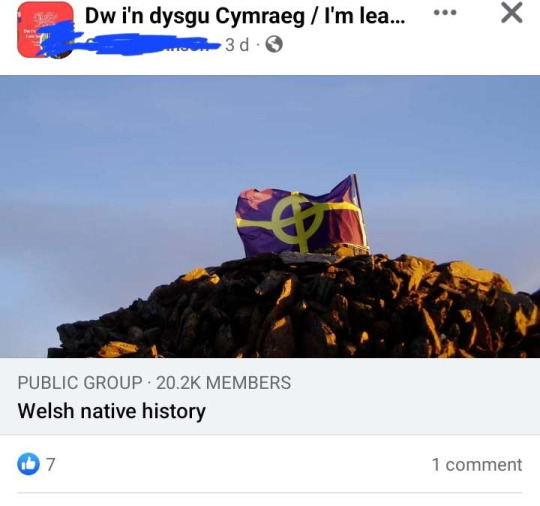
As mentioned in one of my other posts on this topic - the term 'native' is frequently misused in a Celtic context. Here, it sets up the basic in-group/out-group dynamic from the start and creates a setting in which members of the group are privy to the 'real' history while others are not. A brief glance at posts in this group makes that quite clear. The flag in the image is a representation of Y Groes Naid - supposedly a piece of the True Cross kept at Aberconwy. Now, there are ways to depict this cross which aren't so dogwhistley - so I'm immediately suspicious this image was chosen on purpose. Right down to the fact there's plausible deniability if anyone tries to point out how much the flag looks like the white supremacist Celtic Cross symbol, since it's Y Groes Naid, right?
I will wrap this up with that as a Celticist, I see far too many people uncritically supporting certain Celtic nationalist movements simply because they are pro-independence. Turning a blind eye to 'acceptable' xenophobia and choosing to believe ahistorical versions of history because it better suits their politics. This must be resisted - we can advocate for the independence of Celtic nations which desire it without relying upon these means. It can be done, I promise. But the path to that means dismantling systems of oppression which exist within Celtic nationalist movements. Awareness of the problem in the first place is a good place to start.
Reblogs and comments are welcome on this post to raise awareness of the issue and actually talk about these things.
Diolch am darllen!
#cymblr#tymblr#Celtic#celtic studies#celtic languages#celtic nations#racism cw#(in case)#xenophobia#anti xenophobia#antiracism#celtic history#celtic mythology#welsh nationalism#annibyniaeth#annibyniaeth wrthfasgaidd#antifascism#Ireland#Wales#Scotland#Isle of Man#Cornwall#Brittany#I didn't have time to touch on pan-celtic nationalism but that's a whole nother beast#reblogs welcome#long post
144 notes
·
View notes
Text

"Hereafter follows the two Dukes of Brittany and Bourbon on horseback armed and with crests as if they were at the tourney."
by Barthélemy d'Eyck from Le Livre des tournois (Traicte de la Forme de Devis d'un Tournoi) or King René's Tournament Book
#medieval#middle ages#knights#knight#dukes#duke#brittany#bourbon#france#tournament#europe#european#armour#heraldry#crests#rené d'anjou#french#illuminated manuscript#history#art#mediaeval#tournaments#tourney#combat#duel
145 notes
·
View notes
Photo

The Stained Glass Windows of Chartres Cathedral
The 167 stained glass windows of Chartres Cathedral, built 1190-1220 CE, are the most complete group surviving anywhere from the Middle Ages. Several windows date to the mid-12th century CE while over 150 survive from the early 13th century CE. There are religious scenes to tell the faithful the key stories of the Bible as well as countless depictions of saints, kings, queens, nobles, knights, and priests. The city's merchants donated 42 windows to the cathedral, and they crop up in many smaller scenes showing the full range of medieval professions from barrel-makers to butchers.
Medieval Stained Glass
The technique of staining glass for windows using metal oxides dates back to at least the 7th century CE and the churches of the Byzantine Empire. However, the craft really became a refined art in the 12th and 13th centuries CE. The five main colours used to 'stain' glass were bright ruby red, which came from copper oxide, sapphire blue from cobalt oxide, green from iron oxide, yellow from sulphur or soot, and purple from manganese oxide. These materials were added to the glass while it was being heated, but because the result proved too opaque to allow much light through, often a thin layer of coloured glass was laid on top of a thicker pane of transparent or white glass. Painted on the interior side of the glass, details of scenes were rendered using a mixture of glass fillings, metal oxides, and vinegar or urine. The paint was then permanently fused onto the glass by putting the pieces into a kiln.
Individual pieces of stained and painted glass were specially cut according to a design chalked out beforehand on a wooden board and then inserted into lead borders to make a single composite panel. The finished panel was then mounted into the metal armature of the window frame using dowels and metal strips. A single tall lancet window at Chartres may include over 50 such panels of all shapes and sizes.
Not only decorative, the windows were also intended as a pictorial guide to the Gospel message in an era when few could read. Consequently, the wages of sin, the benefits of salvation, and the lives of the most important saints and biblical figures are shown as a lesson to all. Most windows, when they tell a narrative such as the life of an apostle or Bible parable, should be read from left to right starting at the base. Four-leafed rosette or quatrefoil panels are read by looking first at the bottom leaf, then the left, centre, and right leaf, and finally the top leaf. Following are descriptions of only some of the most important and striking windows in Chartres cathedral.
Continue reading...
65 notes
·
View notes
Text
who’s everyone’s dream puppet history guest? mines brittany broski
#she was so great on top 5 beat down#I need her to meet the professor#brittany broski#puppet history#watcher#shane madej#ryan bergara#the professor
341 notes
·
View notes
Text
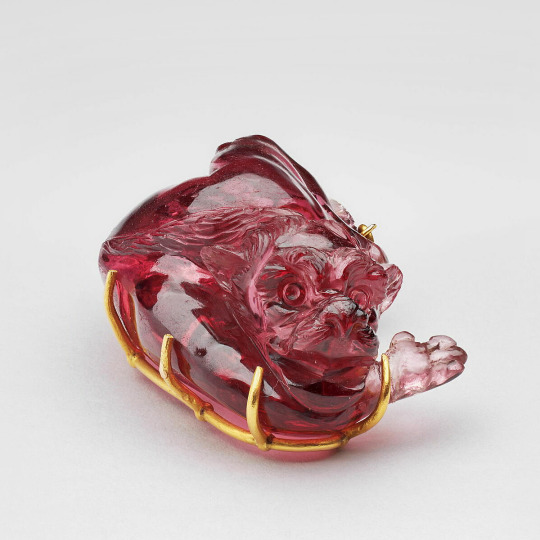
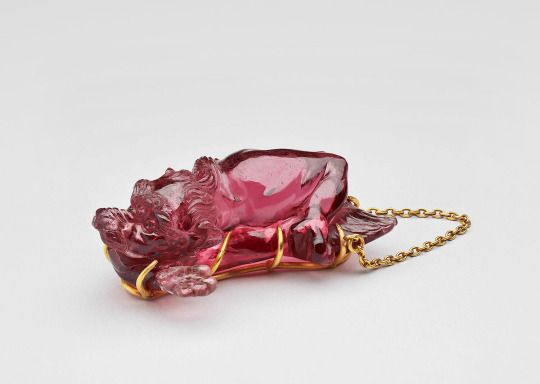
The Côte de Bretagne, Louvre Museum
The Red Spinel, known as the Côte-de-Bretagne, is the oldest gem in the French Crown Jewels collection, originally belonged to Anne of Brittany & her mother Marguerite de Foix (c. 1480).
It was later shaped into a fat "Oriental" dragon with flames by Jacques Guay, the gemstone engraver of Louis XV.
During the French Revolution, it was stolen from the Royal Storehouse. It miraculously surfaced in London in 1797, and was restored to the French collection.
229 notes
·
View notes
Text

The Wave, Paul Gauguin, 1888
#art#art history#Gauguin#Paul Gauguin#landscape#landscape painting#seascape#Brittany#France#Post-Impressionism#Primitivism#French art#19th century art#oil on canvas
707 notes
·
View notes
Text
HEY KIDDOS
Are you somehow both a pikmin fan and a student taking AP Human Geography? Or just wanna learn something? No? TOO BAD
There's an amazing trend on tiktok with cute educational slideshows so have the Koppaites teach you about population and food crises
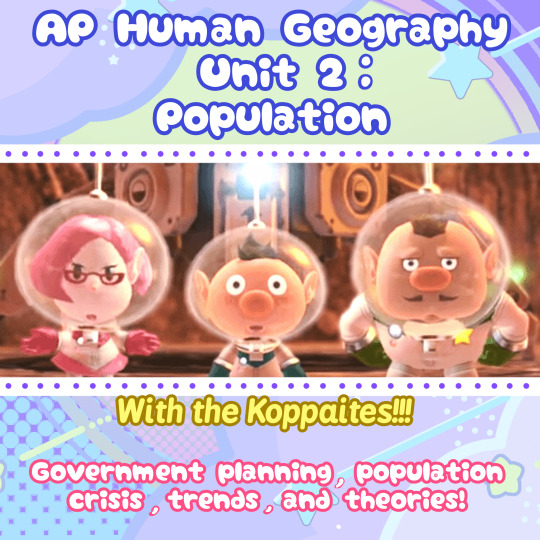
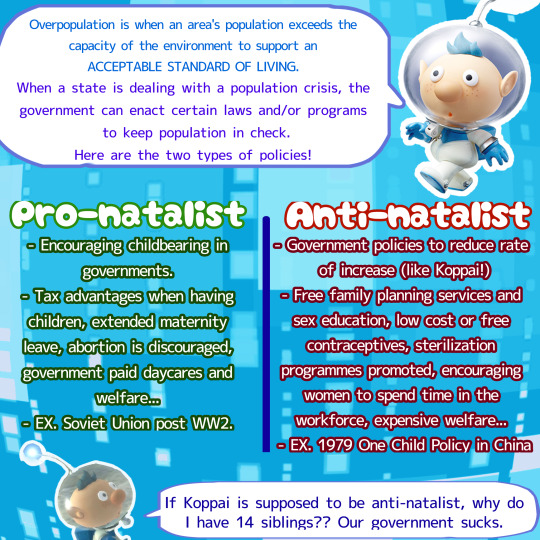


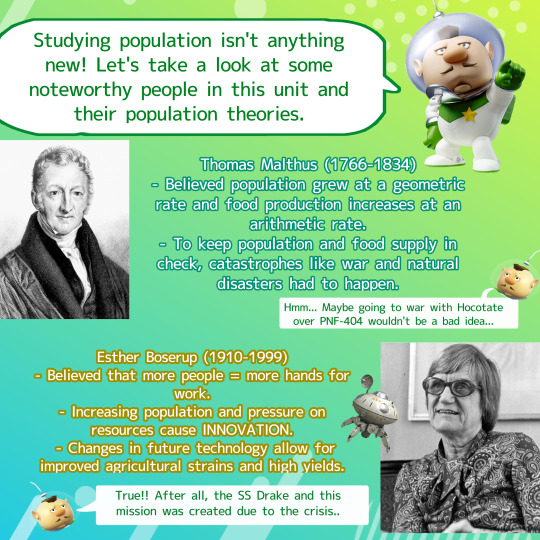

#legitimately Pikmin 3 helped me get a perfect score on a human geo exam I'm not kidding#the sillies!#pikmin#pikmin 3#brittany pikmin#alph pikmin#pikmin charlie#education#educational#ap human geography#history#rambles#infodump
169 notes
·
View notes
Text
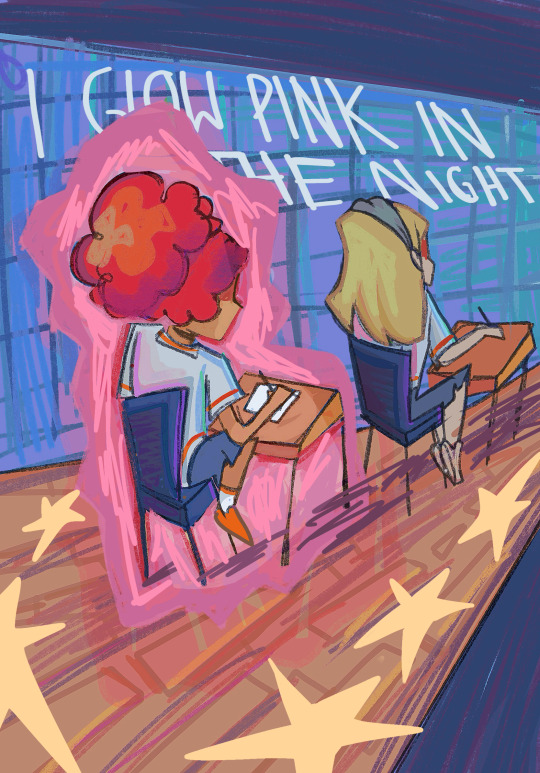
i could stare at your back all day
#mitski#pink in the night#bfb#tpot#bfdi#match bfb#bfb match#pencil bfb#bfb pencil#my arts!!#i watched brittany broski art history videos while drawing this#SO GOOD#absolute fire#the videos i mean#this piece is aight#i love mitski
110 notes
·
View notes
Text




on the set of girl, interrupted via metrograph
#a film <3#also brittany murphy i miss you ilysm#movies: girl interrupted#photography!#*mine#mine: edits#history!#girl interrupted#film#filmedit#film edit#winona ryder#p: winona ryder#brittany murphy#p: brittany murphy#angelina jolie#p: angelina jolie#clea duvall#p: clea duvall
32 notes
·
View notes
Text
63 notes
·
View notes
Text

Marble bust of Claudius Caesar (10 BC-54 AD), 4th Roman emperor, ca. 41-54 AD
Museo Archeologico Nazionale, Naples, Campania
The Roman conquest of Britain was the Roman Empire's conquest of most of the island of Britain, which was inhabited by the Celtic Britons. It began in earnest in AD 43 under Emperor Claudius, and was largely completed in the southern half of Britain by AD 87, when the Stanegate was established.
-
Slavery was an accepted part of everyday society in the Mediterranean world at the time when Rome made contact with Britain. As the Roman Empire expanded, many slaves were acquired as prisoners of war. Rome's initial contact with Britain, followed by the conquest, continued to supply British slaves onto the Roman Slave Market.
This brutal way of life is reflected in the writings of Strabo (1st century BC - 1st century AD). He referred to slaves among the list of commodities exported from Late Iron Age Britain.
Generally a slave's life expectancy was short. Their usefulness declined as they got older, often beyond the age of 30.
Archaeological finds reflect the shocking trade across Britain and East Anglia. Slave shackles and other objects have been found in Essex, Suffolk and Norfolk. -Norwich Castle Museum, Slaves in Roman Britain.
#claudius#slaves in roman britain#slavery#world history#conquest#western civilization#art#fine art#european art#classical art#europe#european#fine arts#europa#mediterranean#sculpture#roman art#roman#southern europe#britian#british#britannia#britain#brittany#celt#celtic
28 notes
·
View notes
Text

François-Athanase de Charette de La Contrie by Jean-Baptiste Paulin Guérin
#franćois athanase de charette#portrait#art#war in the vendée#nobleman#royalist#royalists#france#brittany#breton#french#french revolution#french revolutionary wars#jean baptiste paulin guérin#history#gentleman#vendéan#the terror#the reign of terror#europe#european#catholic and royal army of vendée#kingdom of france#aristocrat#general#monarchy#nobility#christianity#rebellion#king of the vendée
42 notes
·
View notes
Text
nikto unmasked headcanon???!!??!?!??????😧😧🤯

he’s very fun to draw <3333 my pookie
also second one’s sketch cos i kinda like how his eyes look but you can’t see them well in the colored ver😞

#i want to pinch his cheeks REALLY bad#he’s like a kitten to me#this russian man has me in a CHOKEHOLD#if you’re reading this you should really watch brittany broski’s you are not immune to propaganda video (or any other one from#her art history playlist) and also curious archive’s the dragon paradox video#has nothing to do with nikto but just wanted to say that#nikto#cod nikto#nikto cod#cod#call of duty#mw2#mw19#fanart#uhhh#idk what else#art#oh yeah#he’s motivating me to make an effort to not forget russian#im normal i swear#i 🫶🏼 yapping in tags
28 notes
·
View notes